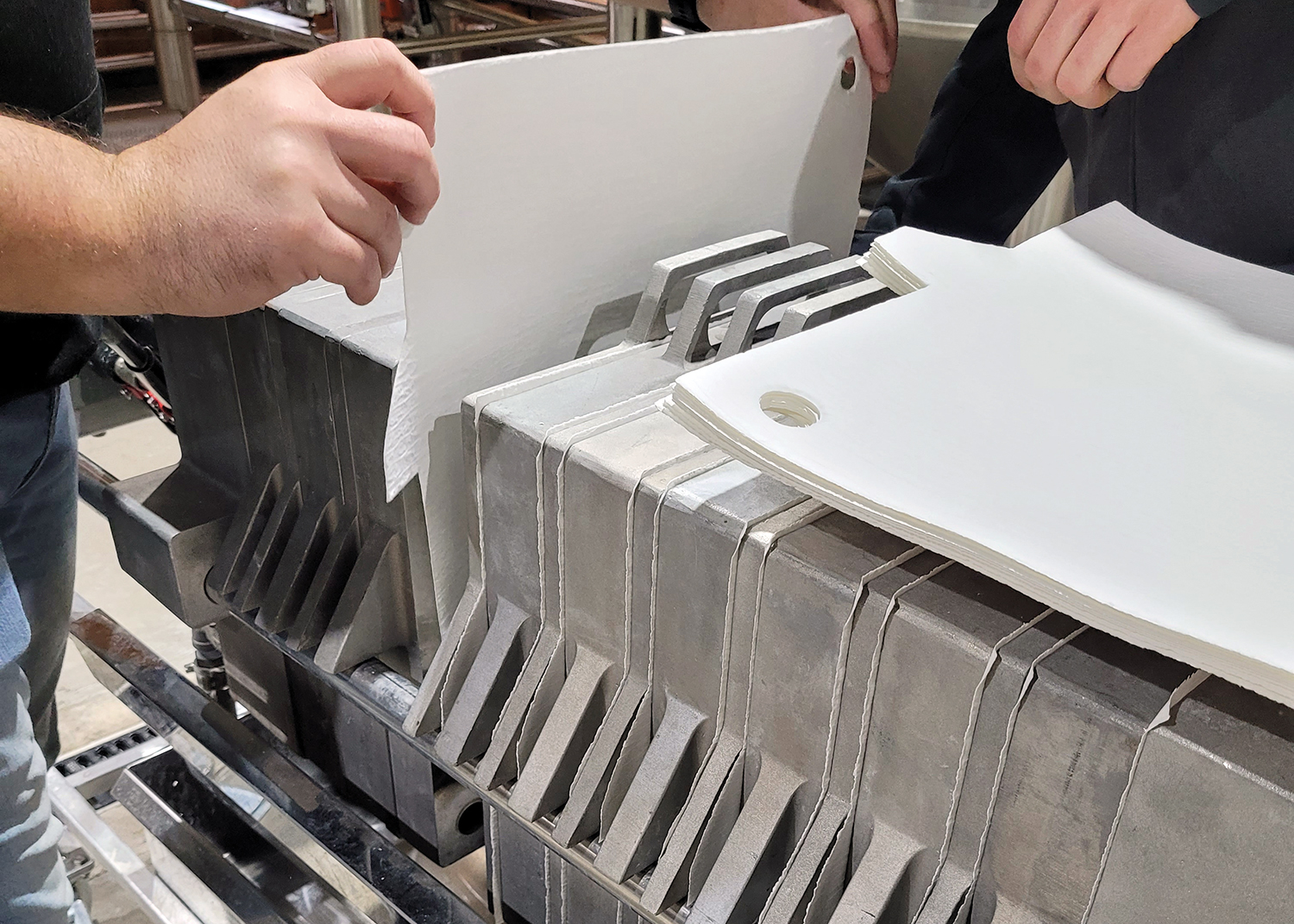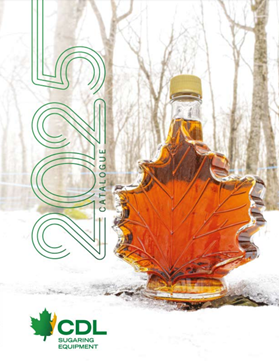Mastering maple syrup filtration with a filter press

Filtering maple syrup is a critical step in the production process. It removes impurities such as nitre and unwanted particles such as wood flakes, plant debris, and sugar or mineral precipitates. This results in a clear, pure maple syrup, and is one of the keys to a top-quality end product.
Of all the filtration methods, pressure filtration with plate filter presses is known for its effectiveness and versatility, being suitable for production at nearly any scale. However, filter presses can be tricky to use. In this article, we’ll guide you through the process, from cleaning your filter press to selecting the right model for your needs.
Cleaning the parts
Once you acquire your filter press, the first thing you should do is clean all the parts. When equipment is manufactured, traces of oil or polish and packaging debris can be left behind. To clean, prepare a solution of hot, soapy water with one cup of vinegar per gallon (or 1 tbsp of acetic acid per gallon). Thoroughly hand clean every part that’s going to come into contact with the syrup. Rinse thoroughly with clean water until all of the wash water containing chemicals or soap has been completely removed. Dry with a soft, clean cloth to remove any residual traces.
Assembling the press
It’s important to pay close attention when you’re assembling the filter press. Depending on your press model, you may want to put it on a vertical position for assembly. With the back plate attached to the press, insert a moistened filter paper, then an empty plate, another filter paper and a full plate, then alternate empty and full plates, inserting filter papers between each one. Make sure to align the notches on the plates and wet the filters with drinking water before assembly for the best filtration. Tighten the plates together using the provided nuts or jack.
Adding diatomaceaus earth
Diatomaceous earth, also known as filter powder, is essential for good filtration. It’s a fine, light, natural powder that’s used as a filtering agent in the maple syrup filtration process. Its main role is to absorb impurities in the syrup by trapping them on its surface as the syrup passes through the filter.
You can add a precoat of diatomaceous earth to the filters before pressing the syrup. To do so, mix 4 cups of filter powder in 3 ½ gallons of hot water. Start the pump and run the mixture through the press, making sure the water runs clear by putting the water outlet over the drain. This stage wets the filters, warms up the press, and gives the filters a first coat of diatomaceous earth for optimum filtration right from the start. After this step, add the filter powder to the filter tank—usually 1 cup per 5 gallons of syrup. You may need to add more or less depending on the quality of the syrup. And with that, you’re ready to start filtering your syrup!
Caution: Always handle diatomaceous earth with a mask and gloves. Store in a dry, odour-free location, preferably in a tightly sealed container.
Filtering with plate press
For the best filtration, use syrup straight from the evaporator that’s been heated to Californian standards (180°F). Make sure the syrup enters the filter press gradually. This allows the press to fill and distribute the powder evenly so the filters don’t clog early. The pumps on presses often pump more syrup than the presses themselves can handle. For that reason, the presses come with a bypass valve that lets you control the amount of syrup flowing through the press and return the excess back to the tank. That way you can start filtration slowly by opening the valve, then adjust the flow gradually as the syrup enters and the powder is distributed inside the press. Doing this is crucial to avoid premature filter clogging.
If the pressure rises, preventing the syrup from flowing, you can add filter powder to ease the process. Continue filtering until all the syrup has been filtered or the pressure reaches 80 psi. If the pressure gets too high, stop the pump, disassemble and clean the press, then replace the filter papers to ensure continuous, effective filtration.
Quality and desugaring
When the syrup comes out of the press, make sure to check that it’s running clear. Generally, a single pass is enough, but you can always run the syrup through again if needed. Once all the syrup has been filtered, switch off the pump. Remove the syrup outlet hose from the syrup barrel or tank and put it in a desugaring tank. You can also direct the outlet hose into your evaporator’s water pan to make sure you collect all the sugar. Once installed, fill the filter tank with hot filtrate and start the press pump to push the remaining syrup out of the press until the filtrate emerges. Your plate press is now desugared.
Cleaning the plates
Disassemble the press and throw out the used filters. Clean all plates thoroughly with hot water, but be careful to avoid spraying the pump’s electric motor. Cleaning the plates ensures that the parts are all free from residue and ready for reuse. Once you’re finished cleaning, reassemble the press to make sure that your equipment is ready for the next stage of maple syrup production.
By following these tips and techniques, you’ll be able to get the most out of your plate press and produce superior syrup. At CDL, we offer everything from 7” to 20” presses, all tailored to your needs and the filtration requirements for the industry.
For more information on gravity, vacuum, and pressure filtration, visit our YouTube channel!



